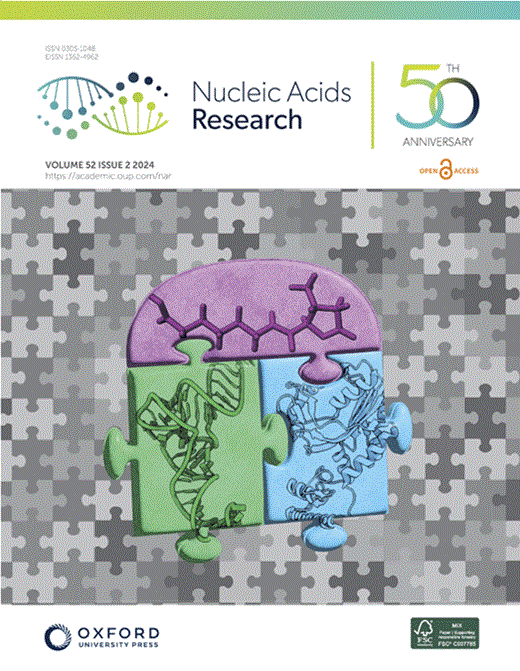P53揭示了染色质重塑和增强子激活的原理
IF 13.1
2区 生物学
Q1 BIOCHEMISTRY & MOLECULAR BIOLOGY
引用次数: 0
摘要
先锋转录因子可以结合到封闭的染色质上,启动染色质的打开和随后的基因激活。然而,使转录因子激活特定位点的具体特征在很大程度上仍未确定。在这里,我们发现转录因子p53意外地在其大多数结合位点启动表观遗传重塑,并在某些位点驱动转录。我们的定量表观遗传数据显示p53建立了新的增强子,而定量转录起始分析表明p53的高局部丰度和序列特异性结合是p53成功诱导转录位点的关键特征。令人惊讶的是,我们观察到p53结合位点和转录起始位点之间的空间重叠,表明这两个事件脱钩。我们的研究结果表明p53的活性在三个不同的层面展开:组蛋白修饰、核小体排出和转录起始,后者是由动态而不是静态p53 DNA结合驱动的。这些发现扩大了我们对p53功能的理解,表明它不仅主动启动转录,而且广泛地重塑染色质。总的来说,这些发现为探索转录因子如何调节染色质状态和基因表达提供了一个概念框架。本文章由计算机程序翻译,如有差异,请以英文原文为准。
p53 reveals principles of chromatin remodeling and enhancer activation
Pioneer transcription factors can bind to closed chromatin, initiating its opening and subsequent gene activation. However, the specific features that enable transcription factors to activate particular loci remain largely undefined. Here, we show that the transcription factor p53 unexpectedly initiates epigenetic remodeling at the majority of its binding sites and drives transcription at select loci. Our quantitative epigenetic data reveal that p53 establishes new enhancers, while quantitative transcription initiation analyses indicate that high local p53 abundance and sequence-specific binding are key features of sites where p53 successfully induces transcription. Surprisingly, we observed a spatial overlap between p53 binding sites and transcription initiation sites, suggesting a decoupling of these two events. Our results reveal that p53 activity unfolds across three distinct layers: histone modification, nucleosome eviction, and transcription initiation, with the latter driven by dynamic rather than static p53 DNA binding. These insights expand our understanding of the function of p53 by showing it not only actively initiates transcription but also broadly remodels chromatin. Overall, these findings offer a conceptual framework to explore how transcription factors regulate chromatin states and gene expression.
求助全文
通过发布文献求助,成功后即可免费获取论文全文。
去求助
来源期刊

Nucleic Acids Research
生物-生化与分子生物学
CiteScore
27.10
自引率
4.70%
发文量
1057
审稿时长
2 months
期刊介绍:
Nucleic Acids Research (NAR) is a scientific journal that publishes research on various aspects of nucleic acids and proteins involved in nucleic acid metabolism and interactions. It covers areas such as chemistry and synthetic biology, computational biology, gene regulation, chromatin and epigenetics, genome integrity, repair and replication, genomics, molecular biology, nucleic acid enzymes, RNA, and structural biology. The journal also includes a Survey and Summary section for brief reviews. Additionally, each year, the first issue is dedicated to biological databases, and an issue in July focuses on web-based software resources for the biological community. Nucleic Acids Research is indexed by several services including Abstracts on Hygiene and Communicable Diseases, Animal Breeding Abstracts, Agricultural Engineering Abstracts, Agbiotech News and Information, BIOSIS Previews, CAB Abstracts, and EMBASE.
 求助内容:
求助内容: 应助结果提醒方式:
应助结果提醒方式:


